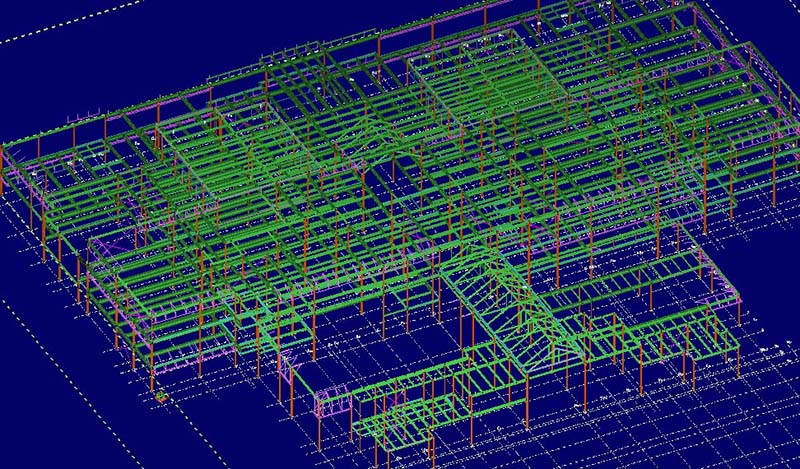Structural Modeling – Features of Revit Structures

Autodesk’s Revit structure is one of the best inventions to date in the field of construction. It has played important in solving the problems of executing structural modeling services. Its easy-to-use features and tools make the modelers capable of generating high-quality and information-rich structural models. The 3D models developed after executing Revit modeling services assist the Engineers in efficiently completing the structural framework of the building.
Apart from Revit structure, structural modeling services or steel detailing services can be executed with the help of Tekla software. Tekla is another software that is prominently used to detail industrial structures or heavy machinery. Revit wins hands-down when it comes to residential structures. Today we will discuss more how this software helps in generating models.
Table of Contents
An important feature of Revit structure is its parametric features.
This helps in the structural design documentation and increases the collaboration efforts between different teams along with minimizing the errors in the model are discussed below.
Enhanced structural analytical mode:
Revit structural users now have a better structural analytical mode, wherein the Local Coordinate System widgets and the structural analytical elements can be displayed.
Building element energy analysis:
The building element energy analysis can be performed on the structural framework of the building by clicking on the ‘energy setting’ dialog box. Once you click on this dialog box you can use the ‘ Use Building Element Mode’ to generate the high-quality energy analytical model. The energy simulation can then be created by using this model.
Use Conceptual Mass Mode:
The energy analysis of the structure can also be performed with the assistance of ‘ Use Conceptual Mass Mode.’
Link IFC file:
The Revit structure manages to support the IFC files by clicking on the ‘Link IFC’ dialog box. An IFC file is linked to the current project for referring to the additional information regarding the project.
If in case of changes are made to the original IFC file later on and the link is reloaded, then the project updates can reflect the IFC file change.
Link CAD:
It also supports CAD files which are very important for the execution of structural modeling services. The Revit users can connect the CAD files in the Revit by clicking on the ‘Link CAD’ option.
Multiple material modeling:
The structural engineers have great options for the materials to be used in the modeling. Revit structure includes materials like steel, precast concrete, cast-in-place concrete, wood, etc.
So the above-discussed features of Revit Structure make it clear that the software is very crucial when it comes to structural modeling.